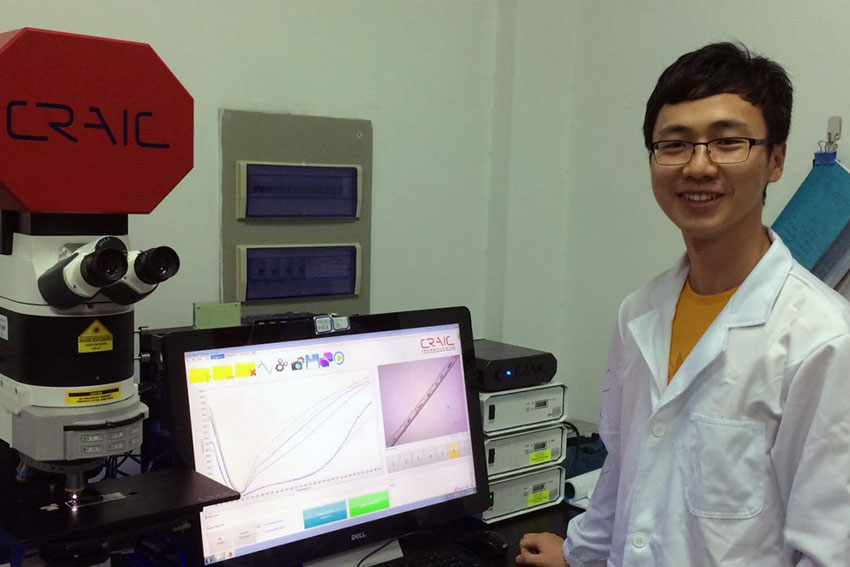Melanoma - What's hair got to do with it

AUT biomedical engineering PhD student Xiyong Huang has been investigating why children are particularly vulnerable to sun exposure.
Melanoma is the deadliest skin cancer in humans. Due to the high level of UV in New Zealand, skin cancer has always been an important research topic. Research shows that individuals who experience excessive sun exposure during their childhood tend to have a significantly higher chance of developing melanoma in later life.
“My research aims to explain why children are especially vulnerable to sun exposure. I started to investigate the characteristics of human hair and its implications for melanoma in the final year of my Bachelor of Engineering (Honours), and my doctoral research builds on this work. My PhD research could have significant implications for the prevention of skin cancer, including public awareness and improvement of sunscreen,” says Mr Huang.
Mr Huang has been working with skin cancer specialist Dr Sharad Paul and undertook a one-month research visit to Soochow University’s Centre of Nuclear Environmental Chemistry in China to further investigate his ideas about the ability of human hair to transfer energy. Dr Paul, Adjunct Professor at AUT, had originally hypothesized that UV transmission via hair may be different in childhood and adults due to different hair structures.
“I began investigating the UV transmission properties of human hair and discovered that vellus hair (predominant type of body hair in children) has lower attenuation coefficients in the UV wavelength range, meaning it can transmit UV photons more effectively into the skin. My research showed that children with high sun exposure tend to have a greater risk of developing melanoma later in life as their follicular stem cells can receive a greater amount of UV transmitted via vellus hair.
“I have always had an interest in biomechanical engineering and wanted to research in an area that would have a social impact. Given New Zealand’s high rate of melanoma – the highest in the world – I am keen to see my research developed further and potentially help with the prevention of melanoma skin cancer, potentially through more effective sunscreens.”
The next step for Mr Huang’s research is to test the transmission of UV through skin to validate results, and then investigate the efficacy of sunscreen on human hair.
Mr Huang’s research is supervised by Dr Mike Protheroe and Professor Ahmed Al-Jumaily from the AUT Institute of Biomedical Technologies (IBTec). His work has already been featured in international journals and was the editor’s pick for the Journal of the Optical Society of America.